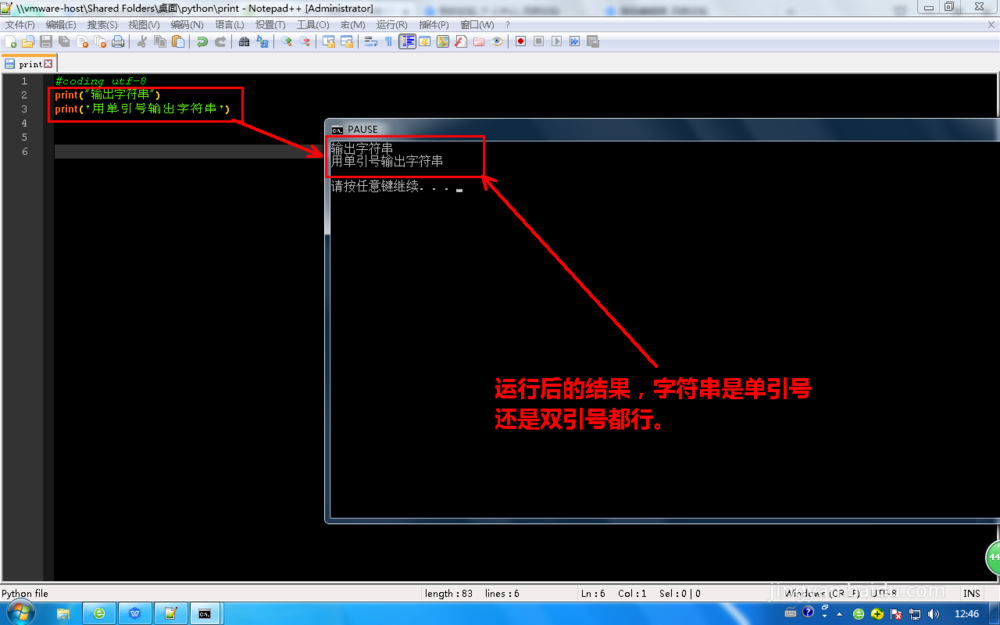一、pickle
pickle模块用来实现python对象的序列化和反序列化。通常地pickle将python对象序列化为二进制流或文件。
python对象与文件之间的序列化和反序列化:
pickle.dump()
pickle.load()
如果要实现python对象和字符串间的序列化和反序列化,则使用:
pickle.dumps()
pickle.loads()
可以被序列化的类型有:
* None,True 和 False;
* 整数,浮点数,复数;
* 字符串,字节流,字节数组;
* 包含可pickle对象的tuples,lists,sets和dictionaries;
* 定义在module顶层的函数:
* 定义在module顶层的内置函数;
* 定义在module顶层的类;
* 拥有__dict__()或__setstate__()的自定义类型;
注意:对于函数或类的序列化是以名字来识别的,所以需要import相应的module。
二、pickle的运行过程
在大部分情况下,要是的对象picklable,我们不需要额外的代码。默认地pickle将智能地检查类和实例的属性,当一个类实例反序列化的时候,它的__init__()方法通常不被调用。而是首先创建一个未初始化的实例,然后再回复存储的属性。
但是可以通过实现下列的方法来修改默认的行为:
object.__getstate__() :默认地序列化对象的__dict__,但是如果你实现了__getstate__(),则__getstate__()函数返回的值将被序列化。
object.__setstate__(state) :如果类型实现了此方法,则在反序列化的时候,此方法用来恢复对象的属性。
object.__getnewargs__() : 如果实例构造的时候(__new__())需要参数,则需要实现此函数。
注意:如果__getstate__()返回False,则在反序列化的时候__setstate__()则不被调用。
有的时候为了效率,或上面的3个函数不能满足需求时,需要实现__reduce__()函数。
三、实例
import pickle# An arbitrary collection of objects supported by pickle.
data = {
'a': [1, 2.0, 3, 4+6j],
'b': ("character string", b"byte string"),
'c': set([None, True, False])
}with open('data.pickle', 'wb') as f:
# Pickle the 'data' dictionary using the highest protocol available.
pickle.dump(data, f, pickle.HIGHEST_PROTOCOL)
with open('data.pickle', 'rb') as f:
# The protocol version used is detected automatically, so we do not
# have to specify it.
data = pickle.load(f)
print(str(data))
四、修改picklable类型的默认行为
class TextReader:
"""Print and number lines in a text file."""def __init__(self, filename):
self.filename = filename
self.file = open(filename)
self.lineno = 0def readline(self):
self.lineno += 1
line = self.file.readline()
if not line:
return None
if line.endswith('\n'):
line = line[:-1]
return "%i: %s" % (self.lineno, line)def __getstate__(self):
# Copy the object's state from self.__dict__ which contains
# all our instance attributes. Always use the dict.copy()
# method to avoid modifying the original state.
state = self.__dict__.copy()
# Remove the unpicklable entries.
del state['file']
return statedef __setstate__(self, state):
# Restore instance attributes (i.e., filename and lineno).
self.__dict__.update(state)
# Restore the previously opened file's state. To do so, we need to
# reopen it and read from it until the line count is restored.
file = open(self.filename)
for _ in range(self.lineno):
file.readline()
# Finally, save the file.
self.file = file
reader = TextReader("hello.txt")
print(reader.readline())
print(reader.readline())
s = pickle.dumps(reader)
#print(s)
new_reader = pickle.loads(s)
print(new_reader.readline())# the output is
# 1: hello
# 2: how are you
# 3: goodbye
以上就是Python pickle类库介绍(对象序列化和反序列化)。世界读书日,无论是电子书还是纸质书,无论是励志书还是专业书,无论是文言文还是白话文,无论是书声琅琅还是默默诵读,只要我们有一颗读书的心,有一颗思考的脑,有一双明慧的眼,就能共同在书海里快乐地翱翔!更多关于Python pickle类库介绍(对象序列化和反序列化)请关注haodaima.com其它相关文章!





